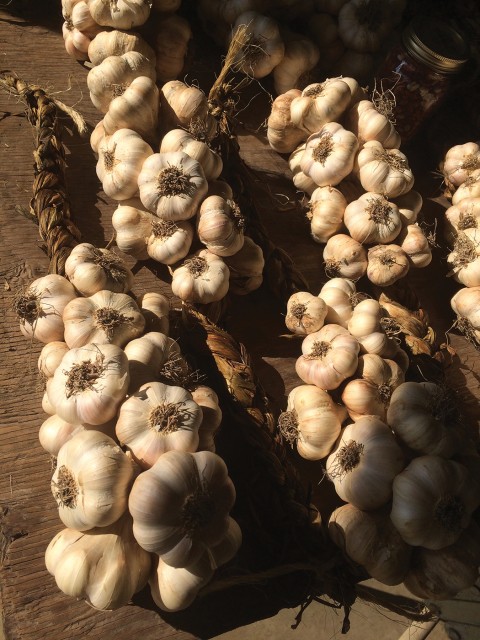Planting garlic at the cusp of the seasons
All hands join in to get 40,000 pungent cloves into the ground.

Heads bent to the task at hand, my brother Henry and his farmhands, interns, and their families kneel in the soft soil and breathe in both the yeasty aromas rising up from the freshly tilled earth and the sweet woodsy smells descending from the forests surrounding the field. They also breathe in pungent garlic of many varieties, including German Extra Hardy, New York White, Korean Red Hot, Georgia Crystal, and Italian, German, French, and Russian Reds.
Garlic planting takes place at the cusp of the seasons—ideally, just after the warmth of Indian summer fades, and just before the snow flies. In central Illinois, that usually means the first week of November, on a day when the soil is dry enough to work, and when all hands join in to get some 40,000 cloves of garlic into the ground. That day marks a caesura, a break in the normal rhythms of autumn on our diverse organic vegetable farm. Those rhythms usually include frenetic scrambling to get all the greens and roots harvested for the final markets even as each day gives us fewer minutes of sunlight than the one before.
This year there have been quite a few autumn rains, and one nearly disastrous flooding of the stream that runs along the fertile bottomland field, so Henry watches the weather each day, and checks the condition of the soil in the part of the field set aside for next year’s garlic patch. He does this by grabbing a harvest knife and jabbing three or four inches into the soil near the west side of the field where the sun has been hitting the longest. Then he picks up a handful of loosened earth and crumbles it through his fingers, feeling for stickiness.




